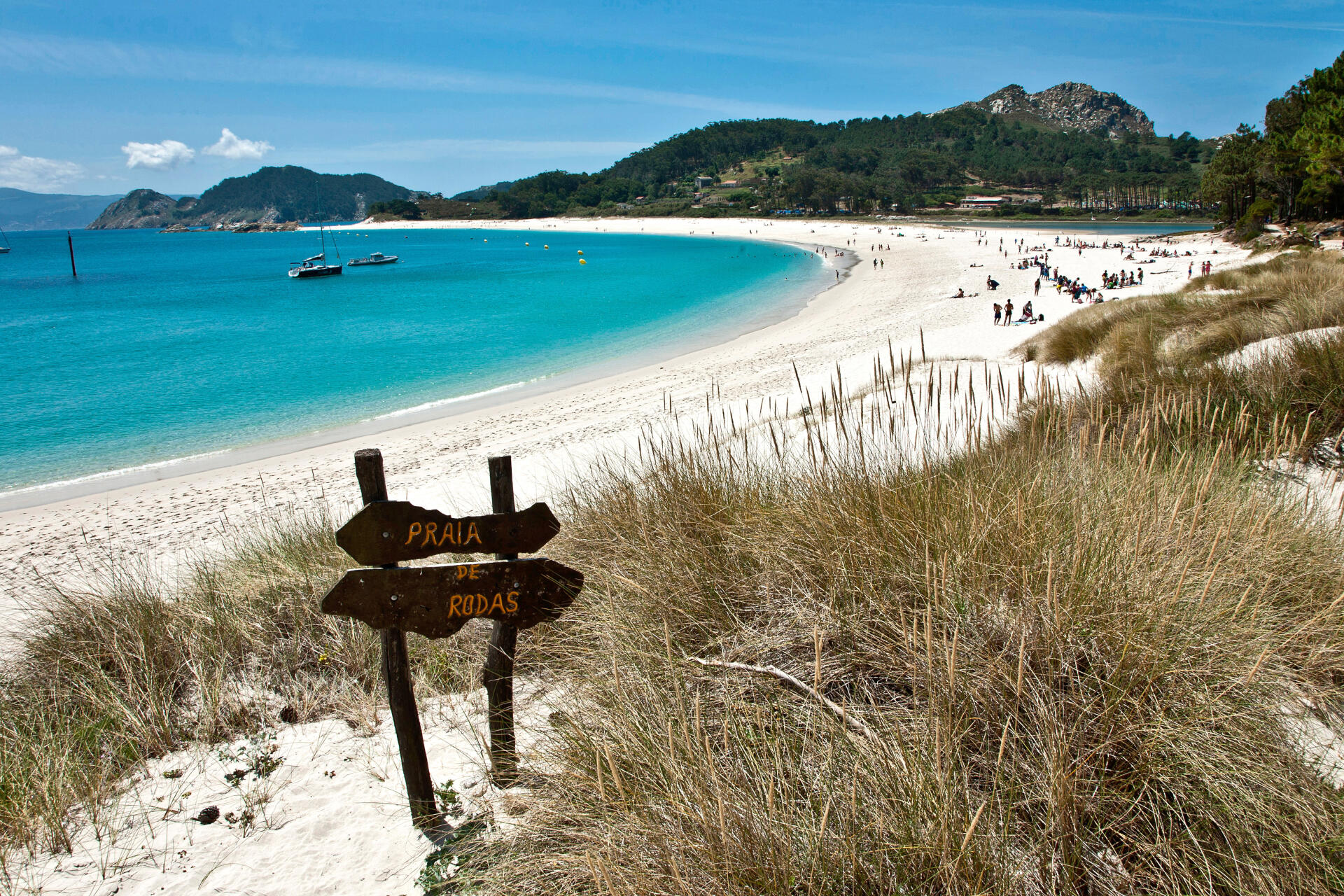There are places where, as soon as you arrive, you already dread the moment when you will have to leave. This is the case of Cies, this archipelago off the bay of Vigo, in Galicia (Spain). A paradise that invites contemplation and slowness, between beaches of fine sand with grains of quartz thousands of years old, multicolored butterflies, broom in flower, forests of pine, eucalyptus and oaks, the trails leading to the three lighthouses and the transparent (but very cool!) waters
Guide Alberto Justo Mosquera Abellas remembers going there child, from Vigo, with his uncle’s boat, without a license: “We stayed there for a few days in the summer. This island – because here we are not talking about an archipelago but an island – is first and foremost a treasure for us. » And for whoever discovers it. In this month of September, the blues of the sky and the ocean merge, the island is deserted and takes on the air of Greece.
The days are a little shorter, but there remains great mildness; a warm, sparkling light accompanies our first steps towards the only place where we can put down our luggage and spend the night, the Las Islas Cies campsite, by the sea. Before settling down in comfortable tents, we crosses a small dike, on one side the ocean and the chaos of stones covered with white foam, on the other the Lago dos nenos, the lagoon protected from the swell, a refuge for marine life, where we sees all kinds of multicolored fish and gigantic crabs swimming.
Cies is an archipelago of three islands: to the north, Monteagudo, in the center, Faro – both joined by Rodas beach in the shape of a crescent moon – and, to the south, detached from the other two, San Martiño. To appreciate the silences, you have to stay there for several days and prefer September, or spring, as park ranger Sergio Rojo advises. “In May, the island is covered in yellow and white flowers, and butterflies fly by the thousands! »
Everywhere, landscapes dotted with sculptures drawn and dug by erosion in the outcropping granite. Some, like Pedra da Campa, a rock pierced by wind and salt, offer a natural window onto the ocean. Others look like fish or turtle heads.
Since 2001, this nature reserve has been part of the Maritime and Terrestrial National Park of the Atlantic Islands of Galicia, whose emblem is a cormorant with outstretched wings, one of the species along with the gull that can be observed from the Peito lighthouse , north of Monteagudo. As the archipelago is protected, the park does not tolerate more than 1,800 people per day and authorization is required to access it. Moreover, this exceptional, car-free space, 4.5 kilometers long, remains fragile, especially at the peak of the summer season, when the 450-place campsite is full.
You have 47.14% of this article left to read. The rest is reserved for subscribers.
